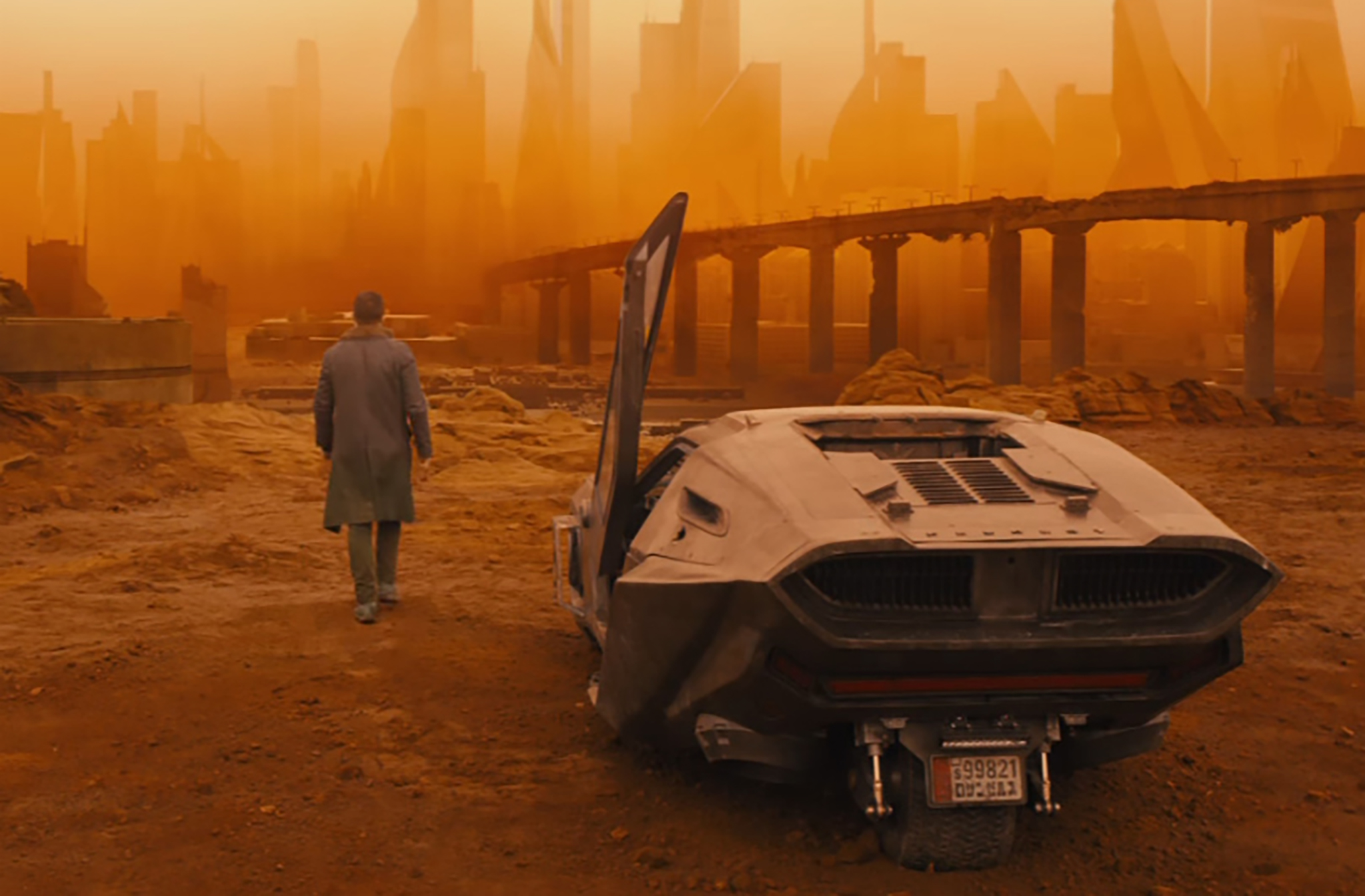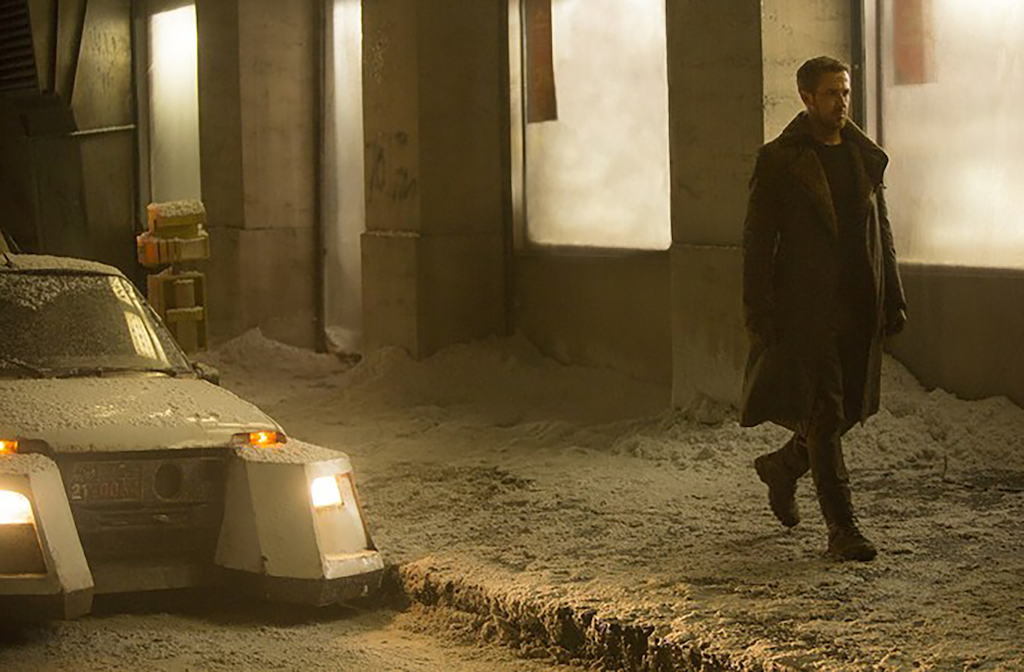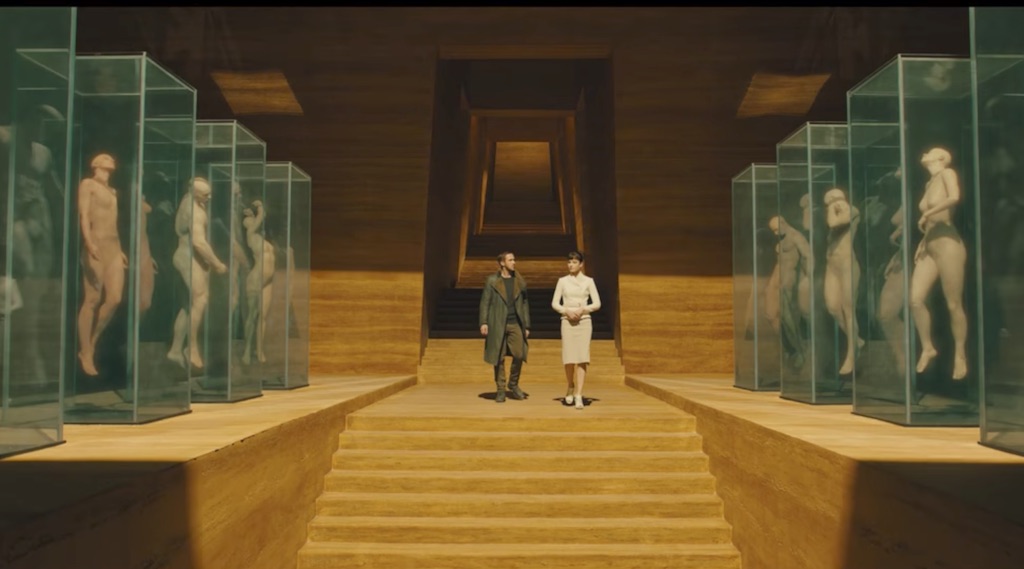The science of Blade Runner 2049: flying cars, holograms, replicants and more
With Blade Runner 2049 about to hit cinemas, we look at the technology of the future


The sequel to the genre-defining 1982 hit, Blade Runner, hits screens tonight, so we’re taking a look at the real world science behind the movie.
Set 30 years after the first film, Blade Runner 2049 revisits Ridley Scott's grimy, replicant-dominated world as LAPD Officer K (Ryan Gosling) tracks down Rick Deckard (Harrison Ford). Here's the trailer.
Flying cars

If we could take one thing from the Blade Runner universe right now, it'd be the cars. Still achingly 80s, with boxy lines and scissor doors, vehicles dominate the trailer. And, this time, they're not that far from reality.
Aeromobil promise "a real flying car, with all that a car and an aeroplane have to offer". Their spinner is made from a carbon composite, and has a set of wings and a rear propeller that fold neatly into the fuselage when the vehicle is on the ground. The wheels double up as landing gear, and it's got a top speed of 160km/h on the road and 360km/h in the air.
Sadly, it does lack the grit and grunge of its Blade Runner equivalent, preferring to opt for sleek, teardrop-inspired lines.
Unfortunately, the cars cost around £1 million, take about three minutes to transform, and can't get airborne without a runway. But, more flying cars are in the works.
Uber are working on vertical takeoff and landing vehicles that promise to cut a two hour commute down to 15 minutes. Toyota have backed the development of the alien-looking Skydrive by startup, Cartivator. And HAX have teamed up with Airbus to provide seed money to anyone who can speed up the development of flying car tech.
Get all the latest news, reviews, deals and buying guides on gorgeous tech, home and active products from the T3 experts

Holograms and augmented reality

K and co. don't seem to have adopted driverless vehicles, but the sequel has been given a 21st Century facelift to bring the franchise up to speed with the latest tech.
Rogue replicants can now be identified by AR glasses, equipped with facial recognition and plumbed into an instantly searchable database, and the dirty streets have been brightened up with building-sized holograms.

The tech for AR facial recognition is already here, imagine Google Glass or Microsoft HoloLens plugged into Facebook's vast user base and image tagging software. And, when it comes to holograms, hardware is advancing rapidly.
Holography specialists, Musion have been using a modified Pepper's Ghost illusion to perform impressive 'digital resurrections' for years, famously bringing Tupac back to life for a performance at Coachella in 2012.
Now, a team at RMIT University and Beijing Institute of Technology are working on ultra-thin holograms that they hope will one day leap out of a smartphone screen. And, a team in Japan are creating haptic holograms that use ultrasound to respond to touch and provide tactile feedback.
Their 'Haptoclone' system can copy an object, or a person, allowing two users to see and touch each other from different rooms.
A disposable workforce

Replicants are the true heart of the Blade Runner universe, and Neander Wallace (Jared Leto) has given them an obedience overhaul for 2049.
Designed by private corporations to take on the jobs that people are unwilling, or unable, to do themselves, these flesh and blood automatons are a step beyond simple androids. In this disturbing short, Wallace demonstrates their unwavering willingness to put human lives above their own.
But, just how close are we to bioengineering replicants to do our dirty work for us?
Simpler living organisms are already being co-opted to do the jobs we can't, or won't, do ourselves. Giant pouched rats, for example, are working as bomb disposal experts.
Trained to sniff out TNT, and too light to set off landmines, the rodents walk up and down rope lines in search of buried explosives.
And work is already underway to recreate human bodies piece by piece. Scientists can now 3D print cartilage, bone and muscle, grow 'mini-brains', and combine organics and electronics to produce cyborg-style implants. Synthetic life is here and a team have even created an artificial womb capable of supporting a premature lamb.
Although autonomous replicants are still a long way off, the wheels are already in motion.

Replicant sex and automated warfare
Invent new technology and you can almost guarantee it'll be adapted it for two favourite human past times: sex and war. And this is exactly what's happened to Blade Runner's replicants.
This anime short reveals replicant on replicant warfare, and a reprise of the sexbots (or 'pleasure models') that made an appearance in the first movie.
Back in reality, we're already on the way to both.
Unmanned aerial vehicles (UAVs) are standard issue in modern warfare, and the tech behind them is becoming increasingly advanced. BAE Systems recently announced an adaptable UAV that can switch between rotary and fixed wing flight mid-mission, allowing it to pick up speed like an aircraft but take off and land vertically like a chopper.
Then there's Boston Dynamics' Big Dog, a four-legged battlefield companion robot that can lug a 45kg payload at speeds of up to 10km/h. And AeroVironment's meter-wide Wasp, which, despite its diminutive size, can brave high winds to capture images of from the air.
All of these still have a remote human operator, but the next generation of tech is moving closer and closer to autonomy. DARPA are developing self-driving 'sea hunters' capable of tracking submarines for weeks at a time, making human-like movements to fool any onlookers.
And, whatever you think of sexbots, they've made the leap from science fiction too, and as AI and tech improve you can be sure new advances will find their way into the industry.
Control and kill switches

Rogue replicants cause no end of trouble for Deckard and K, and AI specialists are afraid that their real-world counterparts could do the same.
Two open letters have already been sent to the United Nations calling for a ban on the use of autonomous weapons, the first in 2015 and the second in 2017. with signatories including Elon Musk, Stephen Hawking and Steve Wozniak.
Scientists are working on building genetic kryptonite into engineered cells so that they can be shut down with a drug if they go wrong. And Google DeepMind and Oxford University are working on a kill switch for errant AI (pdf).
In 2013, an AI learnt to pause a game of Tetris indefinitely so that it wouldn't lose. If AI agents learn to switch off the 'big red buttons' designed to shut them down, this kind of mild disobedience could rapidly escalate.

And, there’s already an annual conference dedicated to love and sex with robots. Professor of Pervasive Computing, Dr Adrian David Cheok, and chess master and AI specialist, Dr David Levy gather leading experts together to ask questions like, should robots have to reveal that they're robots (in Blade Runner, it's hard to tell), should they be able to say no, and should there be a limit on the advertising and nudge techniques manufacturers could use to sell them to us?
If you're curious to see what unbridled replicant tech could do to humanity, Blade Runner 2049 is in cinemas on 5 October 2017.
